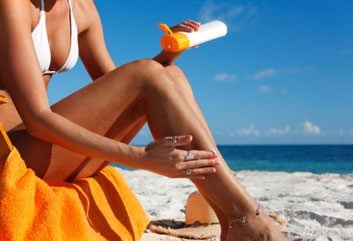
There’s more to sun protection than you think
When the editors at Best Health contacted me to write about what’s new in sunscreens, to be perfectly honest, I didn’t dive into the research with great relish. I thought it was a topic that could end up “spinachy”- a term health journalists use for articles that are more medicinal than inspirational. Yes, an important topic, but what more is there to say than stay out of the sun, wear protective clothing and lather on loads of sunscreen to reduce the risk of skin cancer?
Oh, boy. What I actually discovered is that there’s enough debate about sunscreens-and how they are tested, regulated and labelled-to fill a book. After listening to stakeholders and scientists around the world explain some pretty complicated politics, not to mention Ph.D.-level physics, a few key revelations rose. Forget spinachy-this stuff really creamed my corn.
That’s because while all of this debating has been going on, the incidence of melanoma and non-melanoma skin cancers has been increasing over past decades (and the ozone continues to thin, allowing in more ultraviolet radiation than ever), according to the World Health Organization. The Canadian Cancer Society reported in May that an estimated 5,800 Canadians will be diagnosed with melanoma in 2012, and approximately 970 will die of the disease. More than 81,000 Canadians will be diagnosed with non-melanoma skin cancer this year, and 320 are expected to die from it. Clearly there’s plenty riding on the effectiveness of sunscreen protection.
Here’s what I learned.
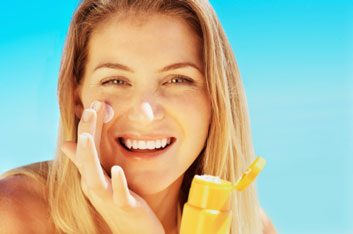
There are no regulations on UVA labelling in Canada
Turns out than in all those years I’ve been slathering on the stuff, the only thing I can be certain of was that I had been protected from UVB rays to the level shown by the sun protection factor (SPF) stated on the label-even when the product is labelled “UVB/UVA” or “broad spectrum.” That’s because in Canada, there aren’t regulations on UVA labelling. (UVB rays are what cause sunburn and cause most skin cancers; UVA rays are longer, penetrate deeper and contribute to skin aging and skin cancer.) Health Canada is, however, changing its sunscreen regulations “in the near future” to reflect brand new Food and Drug Administration (FDA) ones now in effect in the United States. The FDA has set a minimum ratio of UVA protection to SPF, and created a handy label for manufacturers to use so consumers won’t have to sort out two different symbols or numbers in order to understand exact UVB and UVA protection.
The new sunscreen regulations in America address the serious issue of UVA protection. Starting this summer, sunscreens sold in the U.S. must pass a “critical wavelength” test that shows they provide a minimum amount of UVA protection. The minimum protection: 90 percent of 370 nanometres (nm) of UVA rays. “[The 90 percent] measures breadth of coverage,” explains Dr. Jason Rivers, a clinical professor in the department of dermatology at the University of British Columbia.
U.S. regulators debated requiring two different labels-one rating for UVB protection (SPF) and one for UVA-but decided instead to have products simply state SPF and a symbol or number for UVA protection: “Broad Spectrum SPF [15 or higher].” The new label system is not allowed on sunscreens that are less than SPF 15, even if their formulation provides UVA protection, because the FDA recommends everyone use a sunscreen with a minimum broad-spectrum SPF 15 to reduce the risk of cancer. (Also, the U.S. regulations require sunscreens that claim to be “water-resistant” when swimming or sweating to state whether they remain effective for 40 or 80 minutes.)
Standards Australia revised its UVA requirements in April 2012 to what’s called the ‘ AS/NZ 2604 Sunscreen Standard. “Like the FDA, we will end up with a statement only that the product is ‘broad spectrum,’?” says John Staton, director of Dermatest, an international cosmetic testing facility in Rockdale, Australia. (This country has one of the highest rates of skin cancer-a result of its largely fair-skinned population living a beach lifestyle, plus thinning ozone). “The general view in Australia, as is the FDA’s, is that we should not use a [separate UVA] number or anything else to confuse the public,” says Staton. “The SPF is the most important message to project.”
Until Health Canada revises its regulations, currently products labelled “broad spectrum” provide some UVB and UVA coverage. Says Rivers: “[Canadian] sunscreen products provide safety. They prevent sunburn and reduce the risk of skin cancer.” And remember that frequent application is essential.
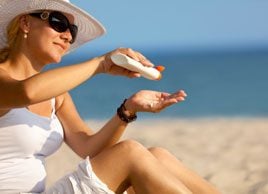
A higher SPF doesn’t equal more protection
In my research, I also uncovered that there’s a debate about capping sunscreen labelling at SPF 50. As a consumer, I had assumed that an SPF 50 afforded me nearly twice as much coverage as an SPF 30; in fact, the increase in protection is minimal. For the record: an SPF 15 absorbs 93 percent of UVB rays; SPF 30 absorbs 97 percent; SPF 50 absorbs 98 percent; and SPF 100 absorbs 99 percent (no sunscreen absorbs 100 percent).
The FDA has proposed a maximum SPF of “50+” on sunscreen labels. The concern with SPFs over 50 is that consumers might be misled into thinking they can stay out longer, apply less product or apply it less often, says Rivers. Manufacturers are interested in providing the FDA with evidence to support higher allowances. Those who make the case for higher SPFs base it on a few studies showing that some people, who are sensitive to the sun or live at very high altitudes, could bene¬fit from the added protection. The main justification for higher SPFs, however, is that in real life no one applies as much product as is used in testing scenarios.
Meanwhile, the Australian Cancer Council, which has been advocating that sunscreens higher than SPF 30 should not be allowed, says it will accept higher than SPF 30, provided that the value goes hand in hand with higher UVA protection.
While the debate rages about SPF 50 and higher, keep in mind that the Canadian Dermatology Association recommends that everyone wear at least an SPF 30.
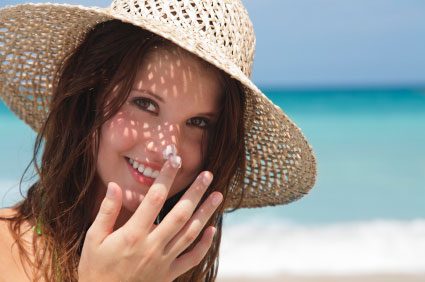
The way SPF is measured in the lab is unrealistic
The most valuable insight I found is that the amount of sunscreen product tested in labs to determine how much protection they provide is way more than people would ever realistically apply. David Steinberg, a long-time sunscreen advisor to government regulators, told me that labs worldwide measure a sunscreen’s SPF by putting a smear of product that is two milligrams per square centimetre thick onto a slide. “No user in the universe has ever applied this much sunscreen,” says Steinberg, of David Steinberg & Associates in Plainsboro, N.J. “You would have to put on one third of an eight-ounce bottle every time you applied sunscreen. The test for SPF is an old measurement that just hasn’t been changed.” Does this mean that SPF is not an accurate number? In his view, it’s not-unless you are quite methodical about following a label’s directions.
So what’s the answer? Regardless of the SPF, says Rivers, follow the application instructions on the bottle, apply at least 30 millilitres (two tablespoons) for full-body protection, apply it 20 minutes before you go outside in the sun, and re¬apply every two hours (or more frequently if you are doing heavy activity, swimming or towelling off). Don’t take your chances-remember that smear on the slide. I know I will every time I’m out in direct sun.
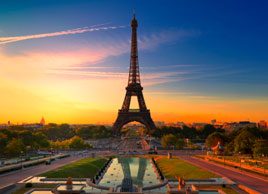
Sun protection in other countries
In Japan, SPF indicates protection from sunburn, while UVA protection is indicated as a “PA” factor. Japan’s measure uses the Persistent Pigment Darkening (PPD) method, based on how quickly people tan.
• PA+ is strong protection (offers some UVA protection)
• PA++ is very strong protection (offers moderate UVA protection)
• PA+++ is the strongest protection (offers good UVA protection)
Europe uses the UVA Protection Factor method (UVAPF), and larger manufacturers have adopted the European Commission/Cosmetics Europe (their cosmetic industry association) recommendation that the level of UVA protection provided by a sunscreen should be at least one third of its SPF. If it is, this is represented on labels by the symbol “UVA” inside a circle.
The U.K. rules are an interpretation of the European Union’s. In addition, some manufacturers use the “Boots Star Rating” system, developed by the drugstore chain Boots, for UVA. Stars denote the “mean absorbance ratio” (the ratio between the absorbance of UVA and the absorbance of UVB). A Boots three-star rating is now the minimum requirement; five stars is a high level. This method measures the level of UVA protection in comparison to that product’s SPF rating, so it’s a bit of a head-scratcher. In theory, a five-star SPF 8 lotion could provide less UVA protection than a three-star SPF 15.
There you go, everything you wanted to know about sunscreen protection. Watch this space for further developments.
Related
• 5 common sun protection mistakes
• Are all sunscreens safe?
• Are Canadians at higher risk for skin cancer?
